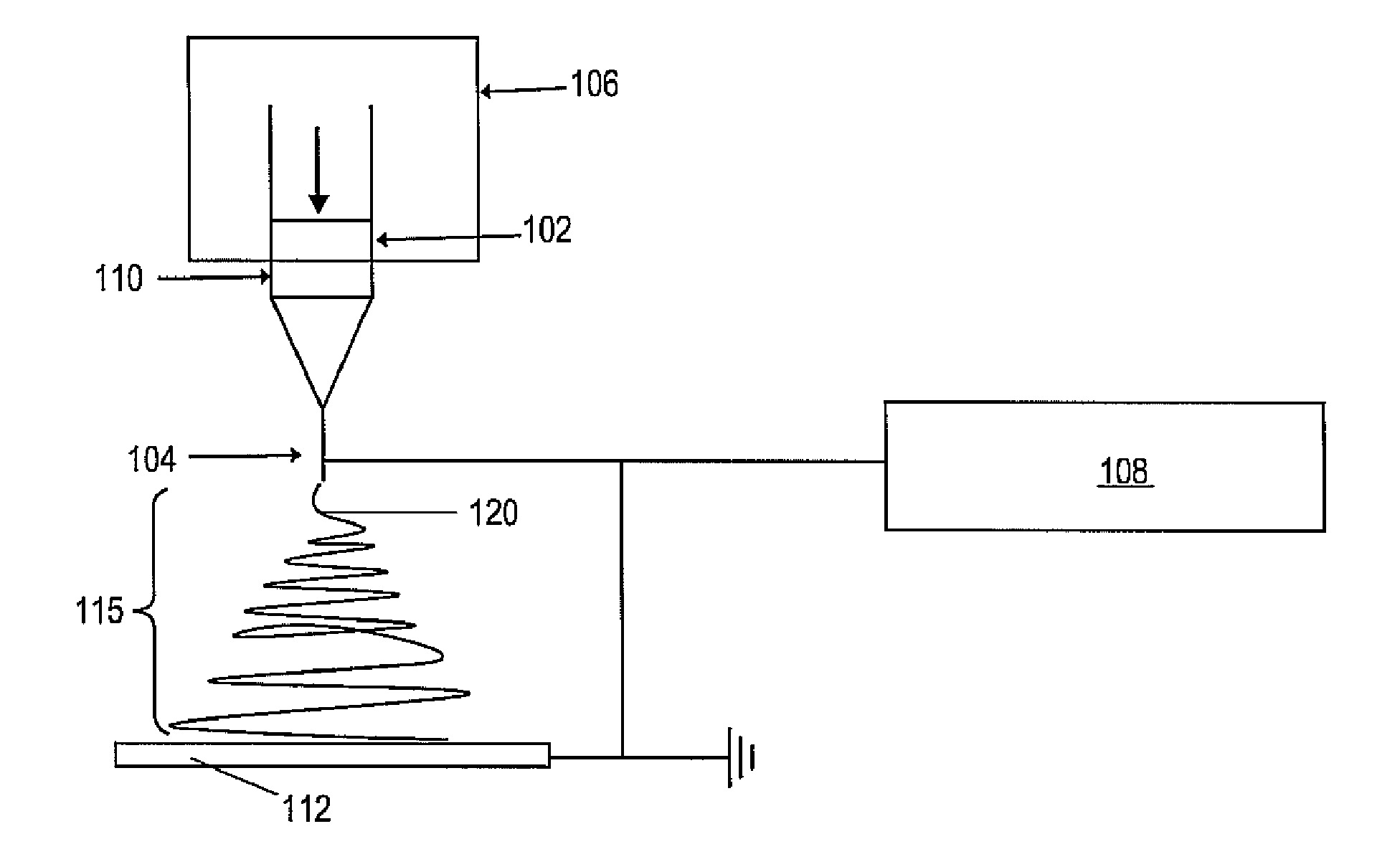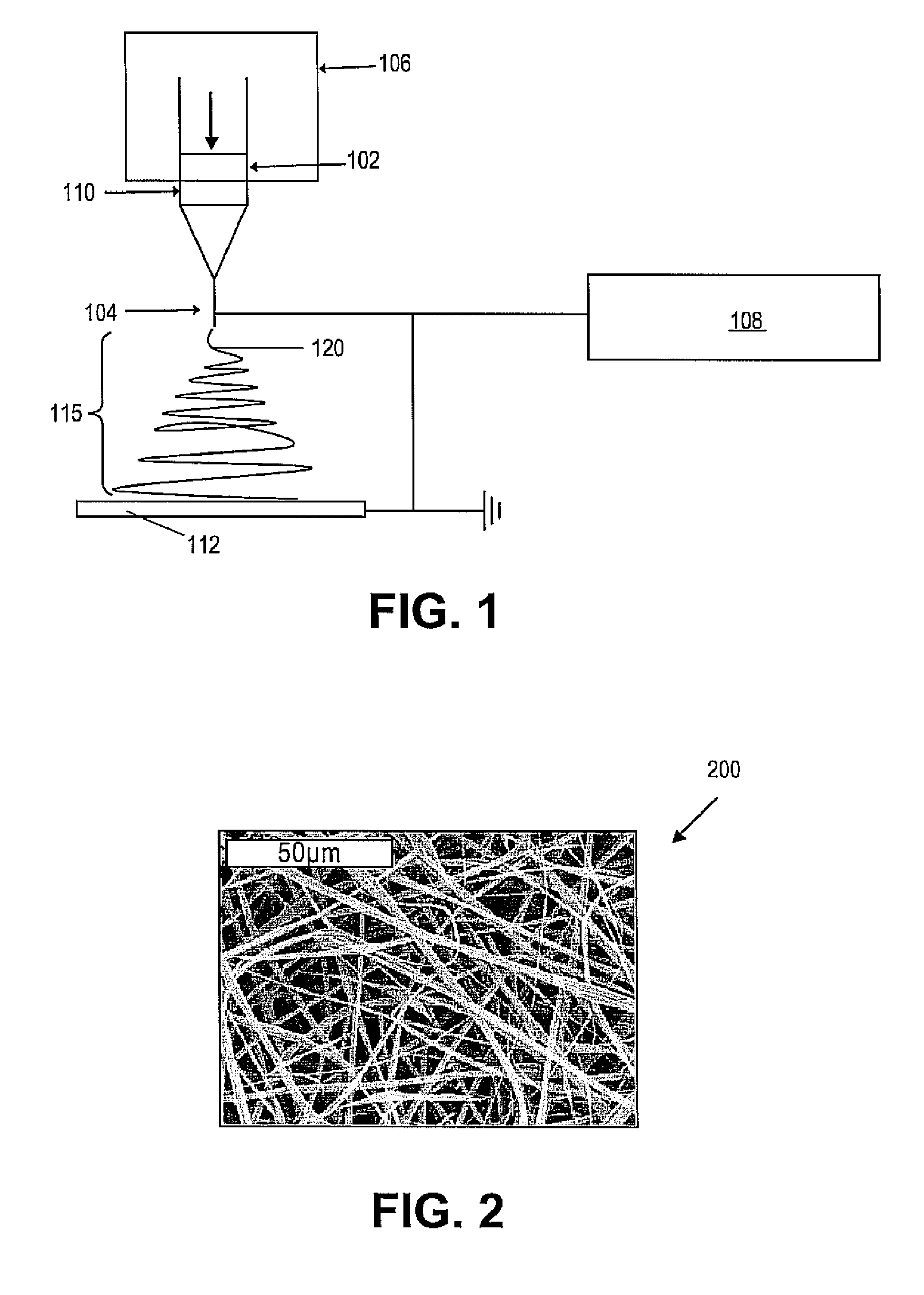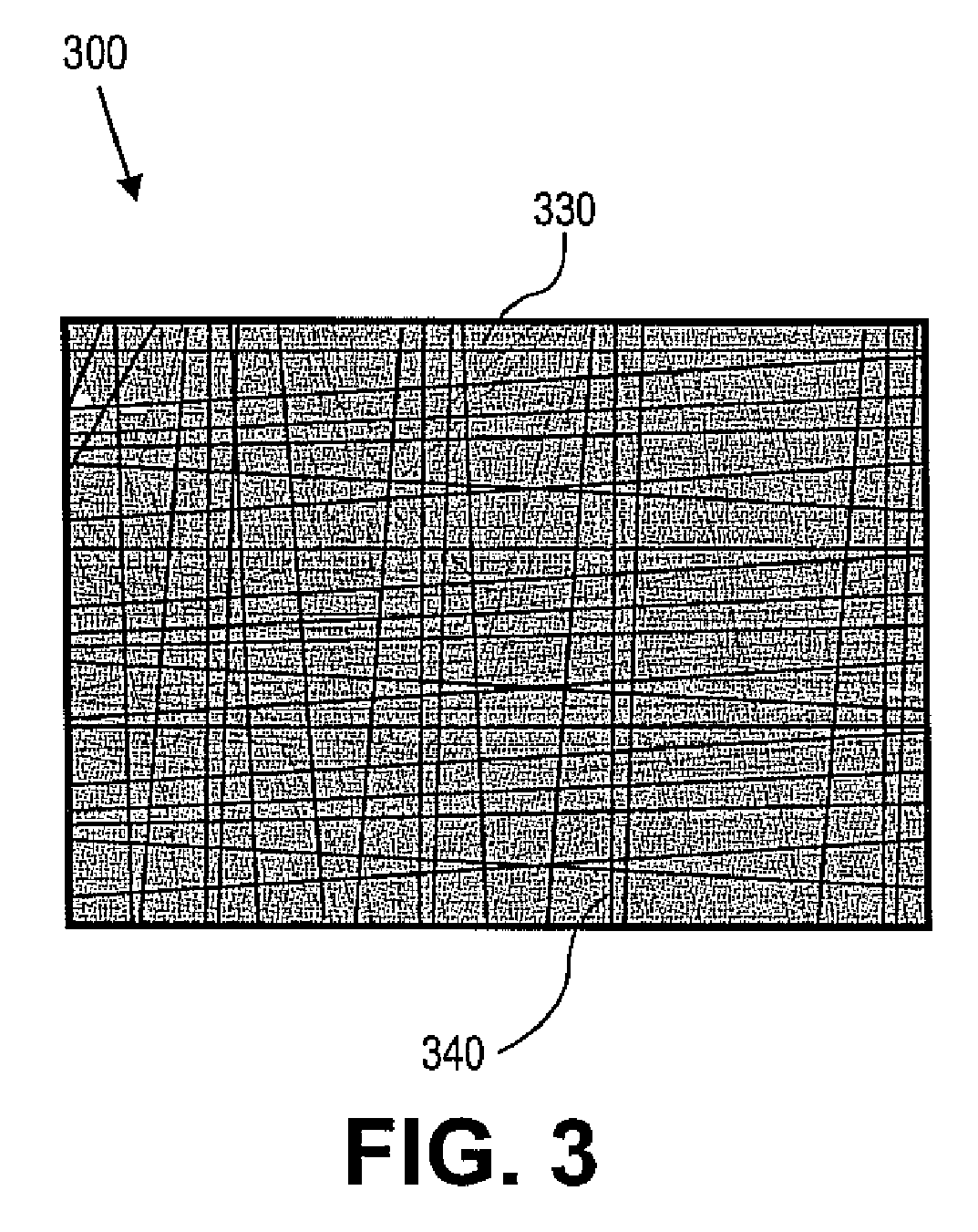Ceramic nanofibers for liquid or gas filtration and other high temperature (> 1000 °c) applications
- Summary
- Abstract
- Description
- Claims
- Application Information
AI Technical Summary
Benefits of technology
Problems solved by technology
Method used
Image
Examples
example 1
Preparation of SiC Nanofibermat
[0024]Silicon Carbide fibers can be electrospun by mixing a precursor of SiC, such as allylhydridopolycarbosilane (AHPCS) and polyethylene oxide (PEO) in chloroform. Electrospun fibermats can then be converted to SiC nanofibermat by calcination and sintering in air at temperature in the range of about 800° C. to about 1000° C.
example 2
Preparation of SiC Nanofibermat
[0025]Silicon carbide nanofibermat can be prepared by electrospinning a precursor solution including allylhydridopolycarbosilane (AHPCS) and polyacrylonitrile (PAN) having a weight average molecular weight of 150,000 in dimethylformamide (DMF). After electrospinning, the precursor fibermat can be converted to the SiC nanofibermat by thermal treatment in an inert atmosphere, such as, nitrogen as follows: room temperature to about 650° C. at about 1° C. / minute, followed by increasing the temperature to about 850° C. at about 3° C. / minute, and then calcining at 850° C. for about 1 hour.
example 3
Preparation of TiO2 Nanofibermat
[0026]Titanium alkoxides, such as Titanium (IV) isopropoxide (TiPP) can be combined with ethyl ethanol, glacial acetic acid, water, and polyvinylpyrrolidone) (PVP) having a weight average molecular weight of 1,300,000. The precursor solution can be then electrospun. The collected fibermat can be converted to TiO2 nanofibermat by first ramping the temperature from room temperature to 500° C. at 10° C. / minute in air and then calcining at about 500° C. for about 3 hours.
PUM
| Property | Measurement | Unit |
|---|---|---|
| Temperature | aaaaa | aaaaa |
| Length | aaaaa | aaaaa |
| Length | aaaaa | aaaaa |
Abstract
Description
Claims
Application Information
 Login to View More
Login to View More - R&D Engineer
- R&D Manager
- IP Professional
- Industry Leading Data Capabilities
- Powerful AI technology
- Patent DNA Extraction
Browse by: Latest US Patents, China's latest patents, Technical Efficacy Thesaurus, Application Domain, Technology Topic, Popular Technical Reports.
© 2024 PatSnap. All rights reserved.Legal|Privacy policy|Modern Slavery Act Transparency Statement|Sitemap|About US| Contact US: help@patsnap.com










